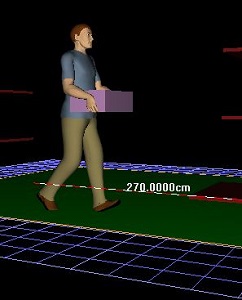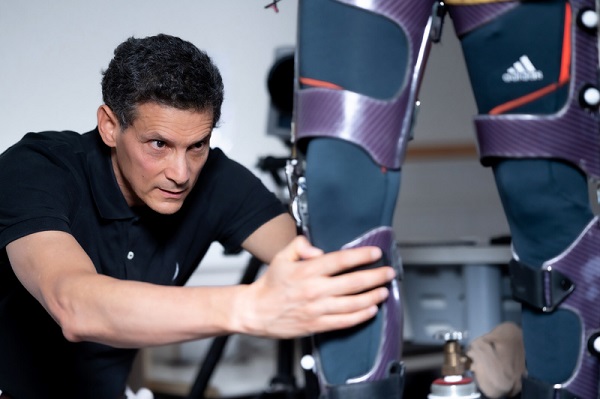Research Interests
Biomechanics, wearable robotics, and sustainability
Research Approach
We integrate theory and experiment work, as we feel it is very important to validate theory with experimental work. We use tools such as modeling, simulation, optimizations, and statistics.
Current Projects
- Optimization-based design of the workspace using
digital human modeling. Biomechanical workload/Ergonomics agriculture
This project integrates knowledge of biomechanical loads with tools from the
field of industrial engineering to reduce the physical load on the worker. To
develop this new concept, we base our design methodology on digital human
modeling and optimization, taking into account both production and biomechanics measures.

- Human locomotion energetic
When we walk or run, the mechanical work performed at the lower-limb joints is
shared by both muscles and tendons. These dynamic muscle-tendon interactions
make it difficult to relate muscle force and work production to the metabolic
cost of locomotion. Thus, this project aims to do the following: 1) contribute
to a muscle-level understanding of the relationship between the mechanics and the
metabolic cost of locomotion; (2) provide data to drive more complex computer
models of human locomotion; and (3) lead to better designs of wearable robots
(e.g. prostheses and exoskeletons).
- Biomechanical energy harvesting
The increasing use of portable electronics, such as mobile phones, prostheses
and laptops, has led researchers to investigate mechanisms for generating
electricity by using human body motion. Several biomechanical energy harvesting
devices have been developed, but the devices’ underlying mechanisms and their
optimal design are not yet fully understood. Our overall aim is to enhance this
understanding.
- Modeling exoskeleton-human
interactions
There is insufficient knowledge about how different parameters of exoskeletons
affect the human user. An understanding of these interactions is critical for
the design of exoskeletons since the design must consider several
interconnected parameters (actuator type, gear ratio, etc.). Since these components
critically influence one another, the design procedure is by no means a trivial
task. Thus, we aim to develop a method – based on theoretical
and empirical models – for designing a functioning exoskeleton by using a
mathematical model to represent the following elements: the device, the human
using the device, and the device–human interactions

- Rehabilitation, human motion
diagnostics and corrections of pathology
These two projects have the following aims. Project 1 aims to develop
parameters to quantify gait stability, and is performed by applying
perturbation during walking and measuring its effect on the human. This project
is led by Dr. Itzik Melzer of the Physical Therapy Department at Ben-Gurion
University. In project 2, we monitor muscle oxygenation and hemodynamics using
Near Infra-Red spectroscopy (NIRS), attempting to capture for the first time
the hemodynamic portion of spastic muscle function. NIRS technology provides a
continuous and non-invasive method. This project is led by Dr. Simona Bar-Haim
of the Physical Therapy Department at Ben-Gurion University.
- Optimizing urban
metabolism – developing a decision-making tool
If we keep at the current rate, humanity's carbon
dioxide emission budget - the amount of greenhouse gases that can be emitted to
the atmosphere before the average temperature on Earth rises by more than 1.5
degrees - is going to be used up within eight years. Unfortunately, the ability
and willingness of local authorities and urbanites to take action to
significantly reduce the negative biophysical urban impact is limited. Choosing
the right measures requires considering their potential contribution to reducing
environmental impact as well as their potential for implementation given
social, economic and political circumstances. In this project, we model both the
metabolism of Tel-Aviv and Israel and the possible steps for reducing
environmental impact as an optimization problem that takes all these limiting
factors into consideration.
